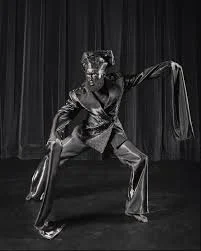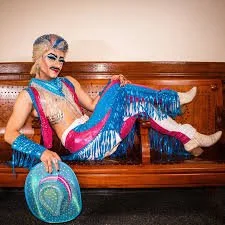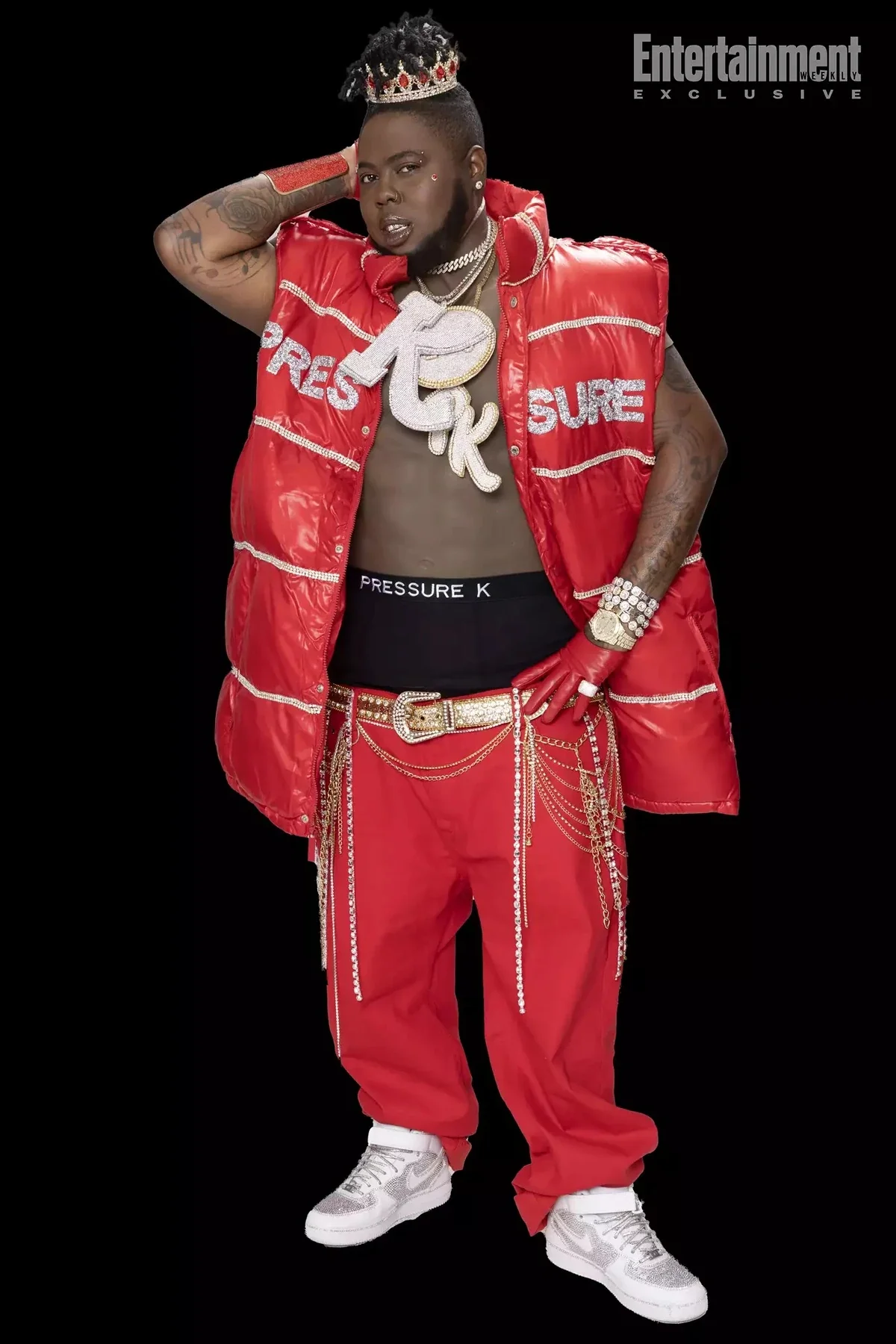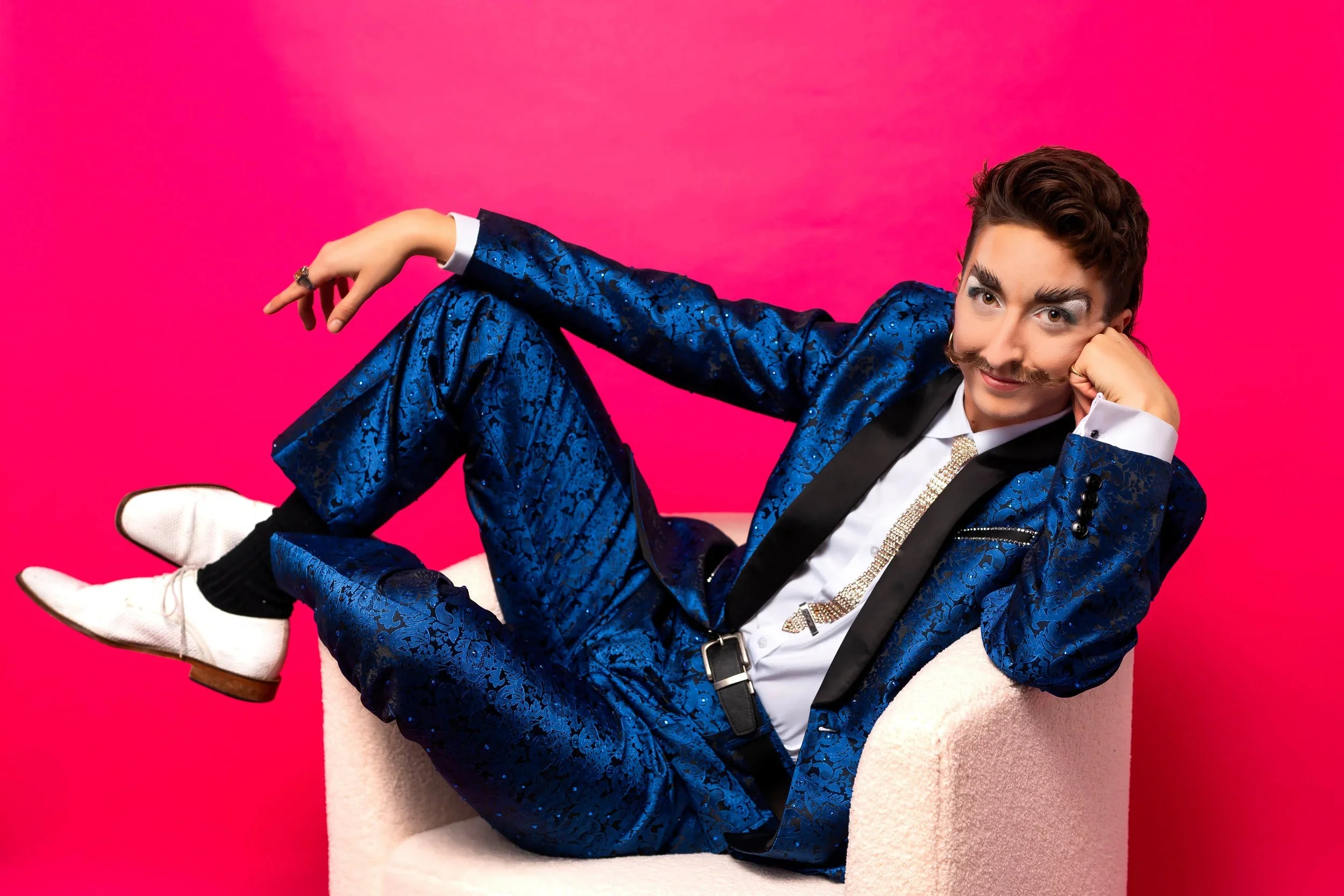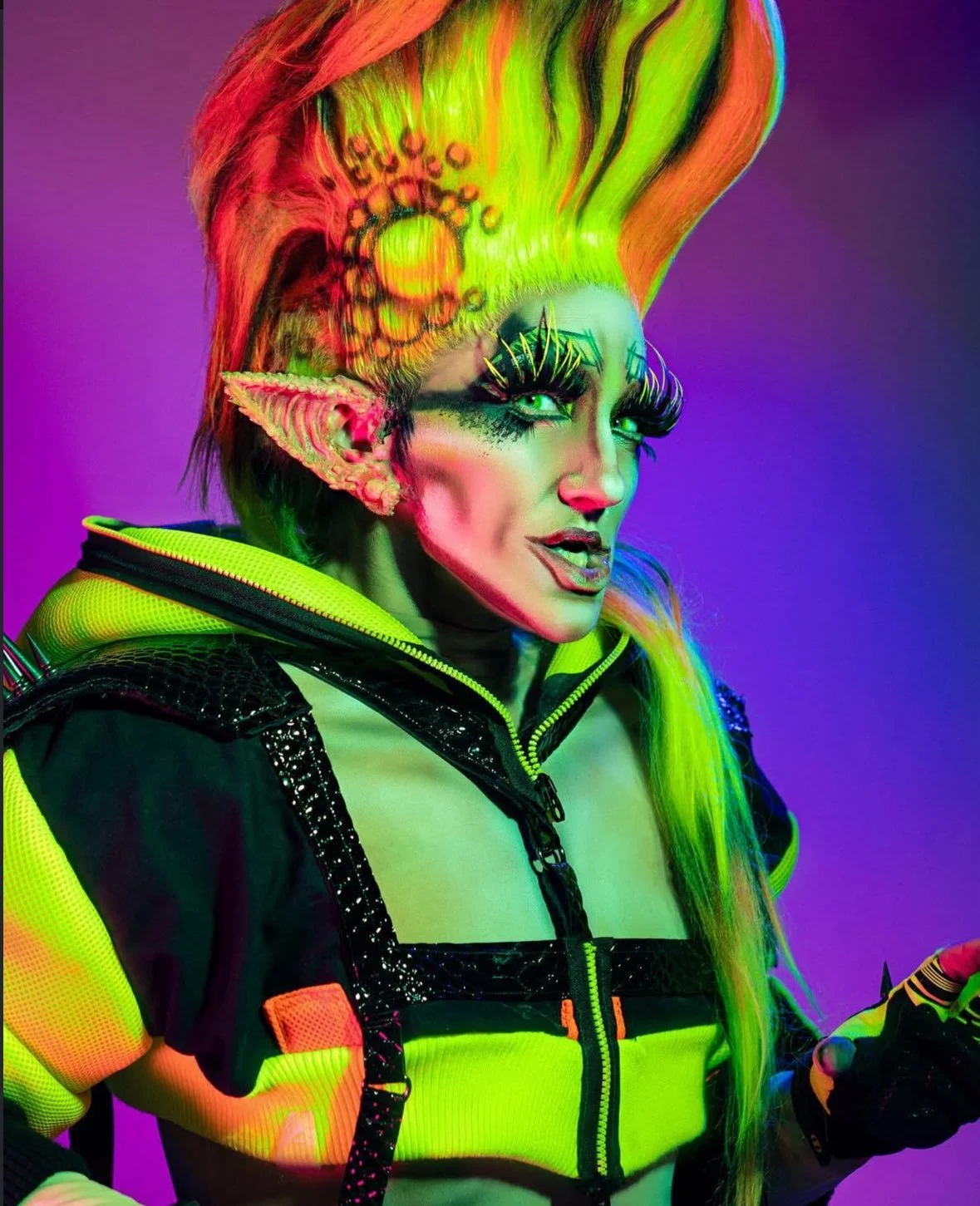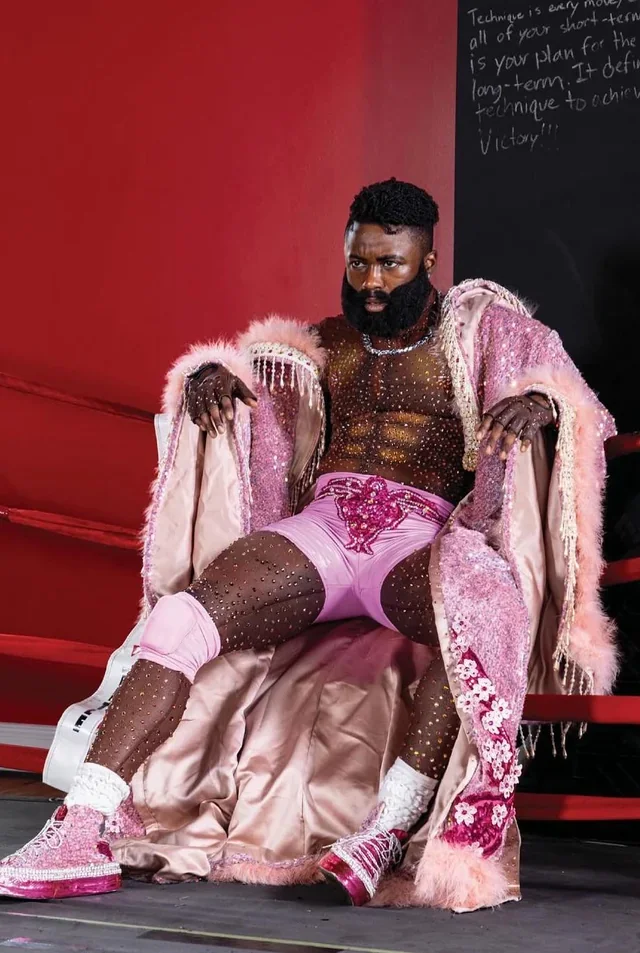King of Drag Review: Let’s hear it for the Kings!
Let’s Hear It for the Kings: How King of Drag Changed Everything
Watching King of Drag unfold this summer on Revry felt like witnessing history in real time—because it was. From the moment we heard that “Somebody Somewhere” actor and legendary drag king Murray Hill would be the host, I felt a swell of pride. Here was someone who started performing in 1995 saying it all so plainly: “It’s long overdue for the kings to take center stage.”—and I silently agreed, fiercely. Wikipedia+15Revry+15Wikipedia+15
Murray’s words—“this vibrant community deserves to be in the spotlight, and I’ll be their biggest hype man”—aren’t just a promo soundbite. They were a rallying cry, and he delivered. Watching him serve as host, mentor, and icon made it feel like we were finally stepping into the light under our own names. Revry
Why This Show Matters
Let’s get real—drag kings have always been here. But for too long, the mainstream has looked past us. King of Drag changed that. Revry's six‑episode series, with a cast of ten phenomenal American drag kings, and a lineup of high‑profile guest judges, was a shock to the system in the best possible way.
This show reframed popular competition shows with a comedic twist. Instead of queens in heels, we saw kings in full armor of bravado, camp, glamour, politics, instruments, and emotional depth. From the beefy challenges to the final lip‑sync, this cast of ten delivered—fully respecting masculinity in drag as a wide, expressive spectrum… To be honest though, I have only seen two episodes of RuPaul’s show so I am only hearing from friends that there were some parts that gave a respectful nod to the popular series RuPaul’s Drag Race, and even though some of the references probably went over my head, I still loved every second of the King of Drag.
Spoiler Alert!
By the end of episode six, we had a winner: King Molasses, crowned the first ever King of Drag. Their win wasn’t just a personal triumph—it represented a seismic shift in how drag king artistry is perceived. As Molasses said, this moment is “so much bigger than me”—a stepping stone toward visibility, credibility, and equality. Every one of those Kings would have been incredible as the first King of Drag, and having followed King Molasses for a few years, I have no doubt that they will represent our community well. I have so much adoration and respect for that DC King.
What Blew Me Away: The Kings & The Judges
From week one, the energy was next‑level. The cast—King Molasses (D.C.), Dick Von Dyke (Minneapolis), Henlo Bullfrog (Philadelphia), Big D (Bellingham), King Perka $exxx (Charlotte), Charles Galin King (LA), Alexander the Great (Austin), Buck Wylde (Dallas), Pressure K (Atlanta), and Tuna Melt (New York)—showed that kings can serve everything from standup comedy to cerebral artistry, from intensely emotional performances to pure unfiltered camp, the talent was clearly unrivaled.
King Molasses was a force from start to finish—bold, artistic, and completely unafraid to challenge expectations. With two challenge wins under his belt and that unforgettable topless Prom King reveal, he didn’t just perform—he made statements. King Molasses confronted the stigma around drag kings head-on and smashed the tired narrative that kings are somehow “less than” queens. His final Beefy Challenge was jaw-dropping; I swear I watched the whole thing frozen in awe, like I couldn’t even blink. And that void suit? Absolutely incredible. The craftsmanship, the concept, the performance—it was like watching drag, sculpture, and theater collide in one haunting, unforgettable number. But honestly, what impressed me more than his talent on stage was how he carried himself behind the scenes. He was the kind of competitor who lifted others up—like helping Pressure K apply his beard or sitting with Perka Sexxx after his brilliant Steve Urkel number didn’t land with the judges. Those moments of compassion and camaraderie made my heart swell. Drag is about community as much as it is about competition, and King Molasses showed us both. That’s why I’m beyond proud to see him crowned as the first-ever King of Drag—not just because of what he can do, but because of who he is while doing it.
Dick Von Dyke—our fierce Midwest king and unforgettable runner-up—brought a rare combo of stand-up savvy and drag finesse that turned every performance into a theatrical masterclass. His wit was lightning-fast, his characters fully realized, and yeah… let’s be honest—that a$$ deserved its own crown. What struck me most was how at ease he seemed, firing back clever comebacks to the judges like he was born for that stage. But underneath the humor was a deep, beautiful vulnerability. When he opened up about his sobriety, I felt seen and was inspired to get back on my own sobriety journey. His story reminded me of my own battles with anxiety and the temptation to numb it. That moment in the finale—when he got sick and talked about feeling like giving up? That hit hard. I’ve been there. Watching him take a beat, listen to his body, and still show up with heart and humor was so powerful. The last-minute decision to change his talent piece was gutsy, and even though I was curious about what else he had planned, I really enjoyed the stand-up—it was smart, honest, and pure Dick. And that final lip-sync?! Whew. He poured everything into it. I do not envy the judges on that call.
Henlo Bullfrog blew me away from the very first episode—not just with his grounded presence, but with the intricacy of his visual storytelling. Every look he brought to the stage was packed with detail, emotion, and a level of craftsmanship that made me pause and just stare. His horror episode look was phenomenal—eerie, theatrical, and deeply expressive. Honestly, I’d love to see him on Dragula someday because his costuming and special effects are already operating at that caliber. But what hit me hardest was hearing him talk about authenticity in drag, especially when people don’t fully understand your style. As kings, we get so much (unsolicited) feedback—I've been told before that my bright colors or colored contour weren’t “masc enough.” But I had a drag mother who told me to stick with what felt like my art. That advice has never failed me. Seeing Henlo stay true to his unique drag vision reminded me that the most powerful performances come from honoring your own weird, wonderful voice—even if others don’t get it right away.
Big D- CAMP!!! Ooooh my gosh I am not even sure where I want to start with Big D… My FAVORITE style of drag is camp, and many can try but Big D delivered!!! He came into King of Drag representing camp in its purest, most joyous form—and honestly, I'm still gagging. As the oldest performer at 50 and with a lifetime of craft behind him, his energy, theatrical wit, and eccentricity were unmatched. He leaned into camp so confidently—his comedy, his costumes, his performance style all screamed unabashed fun and creative extravagance. I absolutely lived for “the doctor” look! It perfectly illustrated Big D’s genius for blending humor, visual art, and storytelling in one breathtaking moment.
Big D delivers camp that isn't campy—it’s thoughtful, polished, and rooted in experience. Watching him perform taught me so much. I’m not the best dancer—and put energy into character and staging instead—but Big D showed how mastery of persona, timing, and visual detail can carry a room. It felt like watching someone who has perfected their craft. He's creative, transformative, hilarious, and exactly the kind of king I aspire to learn from one day.
Perka Sexxx – was nothing short of a revelation on King of Drag—especially during the horror-themed challenge where his boundary-pushing makeup and costuming merged flawlessly with emotional storytelling. His horror drag wasn’t just trickery; it was alchemy—transforming trauma into art. As he explained, “if I’m the scary thing… I can’t get scared,” turning vulnerability into power on stage. What struck me most was his honesty about the struggles he continues to face—balancing college, marginalization, and the emotional toll of rejection, especially from his own family. Watching him name the pain and still show up beautifully was deeply relatable. As someone who uses drag to process PTSD, seeing a fellow artist articulate that experience publicly was both healing and affirming. Perka’s look was transformative, yes—but it was the emotional clarity and resonance behind it that truly elevated the moment
Buck Wylde- brought real heart to King of Drag, letting us glimpse the person behind the polish. In episode 2’s improv challenge, they bravely shared how their persona felt like it was “crumbling” amid stage pressure—an act of vulnerability as bold as any costume reveal. That moment stayed with me. Having come from a conservative red state, Buck uses drag as protest and reclamation. They talk about drawing on their Catholic school roots and Chicano heritage to craft a politically charged persona that’s deep and authentic. Buck’s performance and posture—always vulnerable, always bold—left me feeling inspired and reminded of how powerful drag can be when it’s rooted in truth. I also love what Buck is doing for drag Kings in Dallas TX… It’s such a mecca for drag in the US, and for him to be creating space for kings there is incredible. The vulnerability that Buck had in the show
Pressure K- from the A! He brought raw charisma and joy to King of Drag, delivering high-energy performances that lit up every stage. We were all referring to him as “nonstop hype,” praising his personality and calling for him to go further in the competition… And I am so impressed with his presence on the show, being that new myself I didn’t even apply. His drag identity is also deeply rooted in healing—he’s talked openly about drag as his “cheat code” to process trauma and reclaim confidence, and his explanation of the number he did for the horror episode left me with goosebumps… I can feel the sentiment behind his family relationships. That vulnerability shone through every joke, every lip-sync, making him relatable and real. I see my own journey in his expression: healing through performance, creating space for our stories in limelight. Pressure K clearly set the tempo. His presence reminded me that ownership of story—even when messy—is powerful.
Alexander the Great— a trans man from Austin, Texas, brought exhilaration to King of Drag. He’s been celebrated in the broader drag world—named 2023 Mister Austin Entertainer, 2022 Mister Austin Pride runner-up, and recognized as one of the Top 25 Drag Kings in the World by DragKings.net IMDb+10Gay Pride - LGBT and Queer Voices+10EW.com+10. Though eliminated mid-season, he landed in the top during early challenges because his presence was magnetic, his ambition clear. What resonated most was his mission to conquer the gender binary via physical expression, visibility, and intent. As someone rebuilding identity through drag, I found his ability to move through space and identity so affirming—he showed how performance can literally lift you into being. He commented on pushing back on the drag king expectation by including sparkle and sequin which is so relatable for me. Aesthetically, my drag tends to look much more like his type of drag, so it was special for me to see that represented in the show.
Charles Galin King brought quiet intensity and cultural depth to King of Drag like nobody else. Rooted in Indigenous–Mexican Wixárika heritage, their drag isn’t just aesthetic—it’s ancestry activated on stage, layered with personal storytelling and spiritual weight. Charles has spoken openly about surviving severe mental health struggles and suicidal crises, which grew into a deep reverence for life and an artistic commitment to connection. That kind of authenticity is rare even in queer spaces. In the Nautical Prom challenge, Charles showed up in a sharply tailored white suit, complete with a tongue painted green, black streaks, and a bold sign propped on their head reading “The Black Spot.” It was conceptually ferocious—and heartbreaking—that the judges largely missed the symbolism. I was shouting at the screen: I get it, and I might have been the orange juice choice to scare away the skervy! That’s how connected I felt. With Charles, every wrinkle in the costume, every microexpression on their face, felt intentional, ancestral, and haunted by faith. I respect them for including their culture and survivor story in their art—not just wearing it, but living through it onstage in a way that made me catch my breath.
Tuna Melt- may have left the competition earlier than I had hoped, but they remained unforgettable. Their lip-sync in the group performance may not have had the polish, yet their lyrics and confidence were fantastic. What I most admire is their fearless authenticity. They told themselves and the audience: I’m coming whether you expect me or not. That energy is exactly what our scene needs more of—willingness to stand, to be messy, to melt the expectations of what kings are “supposed” to do. I also absolutely loved that they stuck around and gassed up the other kings with their tuna can van… That’s the kind of energy that I want around.
They each brought something unforgettable… and if any of them are reading this and open for an interview, hit me up!!!
My Experience: Hosting Viewing Parties & Spotlighting Local Kings
So for me, the series was so much more than a TV milestone—it was personal. Hosting weekly viewing parties in my city, gathering folks at our local queer space, and firing up the livestream on Revry wasn’t just fun—it was transformative.
Each screening felt electric. Friends brought their own popcorn, but more importantly they brought enthusiasm. Each episode became a showcase, not only of national talent, but a moment to spotlight our local kings—emerging, bold, brilliant performers. At these parties, I curated intermissions with live performances: local drag kings stepping into the spotlight who wouldn’t have otherwise had that stage.
Seeing eyes light up when someone who had never experienced king drag got hyped, cheered, took pics—that was fantastic. King of Drag gave us national visibility, but our viewing parties turned it into a local movement. Seeing the energy ripple through the room week after week? It felt like we were taking ownership of our own narrative.
The Ripple Effect: Visibility, Validation, and Vision
So what does King of Drag mean for all of us in drag king spaces? It’s validation and momentum wrapped together.
Visibility: The show has streamed free on Revry since June 22, 2025, and has already inspired more than 200 watch parties globally. Revry+2popheist.com+2EW.com+2Revry+12RuPaul's Drag Race+12EW.com+12 That’s not niche—it’s a global wake‑up call.
Validation: Judges and viewer reactions demonstrate: kings can deliver runway transformation, storytelling, dance, comedy, vulnerability, glamour. We’re not token characters—we’re the main event.
Vision: King Molasses said it best—they want their reign to normalize drag kings as artists—not comparisons to queens, but artists in their own right. That ethos matters when we pitch gigs, apply to festivals, build beyond our local scenes. EW.com
Final Thoughts: I’m So Grateful
Being a drag king in 2025 has felt different than ever. King of Drag matters because it says we belong in mainstream culture, we deserve awards, fans, critiques, love, and respect on camera just like queens have always had.
To Murray Hill: thank you for being our hype man and taking this leap with Revry. You brought decades of drag king history into a prism of present and future opportunity.
To the cast: each of you brought excellence. You showed every doubter what kings can do. To King Molasses: you didn’t just win—you prepared the runway for all the kings who follow.
To my community: hosting those viewing parties, spotlighting our local kings, seeing them cheer each other on—it made me hopeful. It made me feel seen. It made me feel powerful.
We’ve still got work to do: more seasons, bigger budgets, unopened doors, audience hearts to win. But King of Drag knocked the first one open.
So here’s to the kings—no longer hiding in shadows, no longer quiet. We’re here, we’re loud, we’re glorious. And we’re taking our place center stage.
